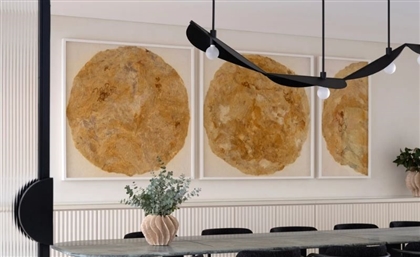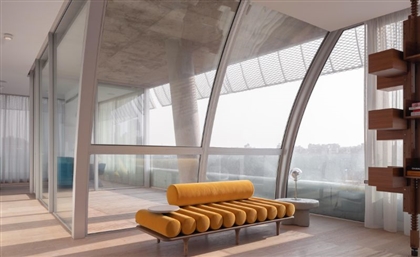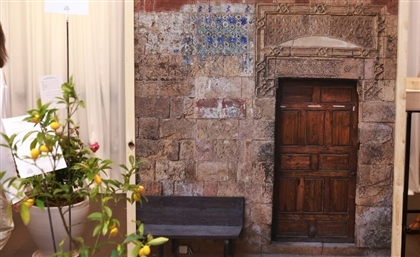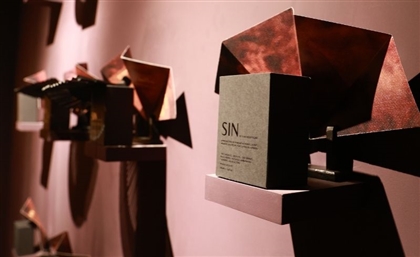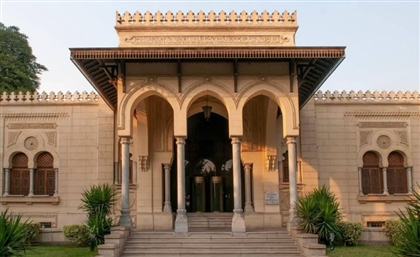Lebanese Ceramicist Lina Shamma Finds Lightness & Structure in Clay
Beirut-based ceramicist Lina Shamma blends precision and playfulness, shaping clay into forms of lightness and structure.
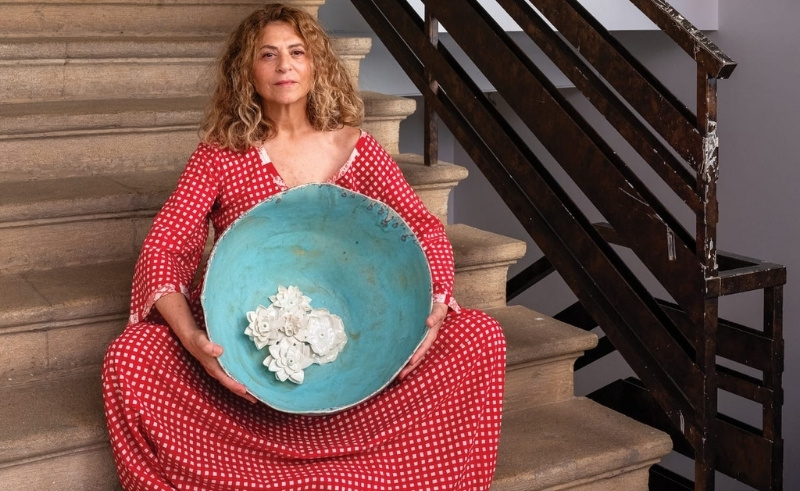
In Beirut, architecture often finds new ways to inhabit matter. For Lina Shamma, who studied architecture before finding her voice in clay, ceramics became another kind of structure, malleable yet enduring, intimate yet monumental. Her practice sits between design and craft, translating proportion, rhythm, and material balance into a tactile language of form.-bc1940b8-b184-48e8-90ca-7c78f8192f80.jpg) Shamma’s path to ceramics was shaped by a long dialogue between disciplines. “I began by making small things for the table, mostly vases,” she tells SceneHome. “Then my architectural background came to the forefront, and I started thinking about how ceramics could be used to create furniture pieces.” This spatial instinct, carried over from her studies, grounds her work in a logic of structure and scale.
Shamma’s path to ceramics was shaped by a long dialogue between disciplines. “I began by making small things for the table, mostly vases,” she tells SceneHome. “Then my architectural background came to the forefront, and I started thinking about how ceramics could be used to create furniture pieces.” This spatial instinct, carried over from her studies, grounds her work in a logic of structure and scale. -a965993e-f3cc-4671-a3a0-33a491dd5cbe.jpg) That sensibility is most visible in her functional works. Table lamps, mirrors, and side tables emerge from the wheel with sculptural clarity that recalls architectural composition more than surface ornament. “I also make a lot of mirrors because they can be deeply personal pieces for interiors,” she says. Each object becomes a quiet intervention in space, reflective, responsive, and intentional in its proportions. “I always try to make them well finished, no matter what angle you’re looking from,” she adds.
That sensibility is most visible in her functional works. Table lamps, mirrors, and side tables emerge from the wheel with sculptural clarity that recalls architectural composition more than surface ornament. “I also make a lot of mirrors because they can be deeply personal pieces for interiors,” she says. Each object becomes a quiet intervention in space, reflective, responsive, and intentional in its proportions. “I always try to make them well finished, no matter what angle you’re looking from,” she adds.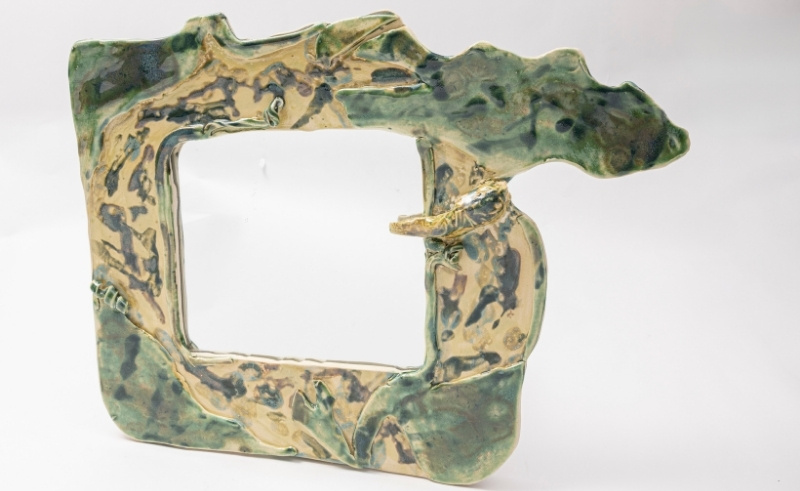 In her exhibitions, Shamma’s sense of form expands into narrative. For We Design Beirut, she created 'Totem of the Present and Absent', a sculptural reflection on her city’s endurance. “I know Beirut through its scars, not the one of postcards, but the one that survived,” she writes. The piece stands as an abstracted monument to resilience, composed from fragments that echo the city’s layered topography and collective memory.
In her exhibitions, Shamma’s sense of form expands into narrative. For We Design Beirut, she created 'Totem of the Present and Absent', a sculptural reflection on her city’s endurance. “I know Beirut through its scars, not the one of postcards, but the one that survived,” she writes. The piece stands as an abstracted monument to resilience, composed from fragments that echo the city’s layered topography and collective memory.-5bdb0ebb-b2c3-47ba-a96a-774ce03ff8d5.jpg) Shamma's recent exploration of marble looks to history for both material and metaphor. In an homage to the Fabergé egg, she revisited the story of the Russian imperial gifts, crafted each Easter by Peter Carl Fabergé for the Tsar’s wife and becoming ever more elaborate over time. Those emblems of a vanished empire endure today as objects of fascination, outlasting the world that created them. Shamma’s reinterpretation, a marble egg adorned with ceramic flowers and set on a reclaimed marble base, transforms that legacy.
Shamma's recent exploration of marble looks to history for both material and metaphor. In an homage to the Fabergé egg, she revisited the story of the Russian imperial gifts, crafted each Easter by Peter Carl Fabergé for the Tsar’s wife and becoming ever more elaborate over time. Those emblems of a vanished empire endure today as objects of fascination, outlasting the world that created them. Shamma’s reinterpretation, a marble egg adorned with ceramic flowers and set on a reclaimed marble base, transforms that legacy. -232e11bc-f423-443a-bc0f-21a3322017b4.jpg) Her process, though disciplined, is guided by intuition. “My work is very intuitive and playful,” she tells SceneHome. “I like to keep a sense of lightness in every piece; there’s always a touch of humour, even when the work feels serious. I want it to feel refined but also full of joy.” Each object carries that sense of movement and discovery. “I treat every piece as something unique. Sometimes I start with a clear idea, but it ends up becoming something completely different. I like creating pieces that let the eye wander; there’s always an unexpected twist.”
Her process, though disciplined, is guided by intuition. “My work is very intuitive and playful,” she tells SceneHome. “I like to keep a sense of lightness in every piece; there’s always a touch of humour, even when the work feels serious. I want it to feel refined but also full of joy.” Each object carries that sense of movement and discovery. “I treat every piece as something unique. Sometimes I start with a clear idea, but it ends up becoming something completely different. I like creating pieces that let the eye wander; there’s always an unexpected twist.”-9d9b7656-ff8f-4d58-88d2-435a35e4dd66.jpg) Shamma moves between porcelain and raku, which she describes as “complete opposites,” testing the limits of density, texture, and refinement. Porcelain allows precision and restraint, while raku holds the trace of fire and touch, between these extremes lies her balance.
Shamma moves between porcelain and raku, which she describes as “complete opposites,” testing the limits of density, texture, and refinement. Porcelain allows precision and restraint, while raku holds the trace of fire and touch, between these extremes lies her balance.
After the 2020 Beirut explosion destroyed her shared studio, Shamma began again, salvaging what remained and rebuilding her space from fragments. That act of renewal mirrors the essence of her practice, an ongoing conversation between fragility and persistence.
- Previous Article AlMusalla Pavilion Travels From Saudi Arabia to Uzbekistan
- Next Article Areen Hassan Uses Textiles as a Language of Palestinian Identity
Trending This Month
-
Nov 18, 2025




